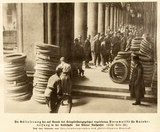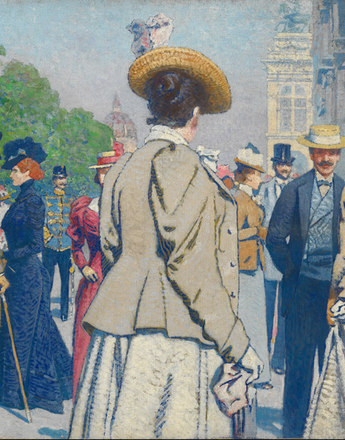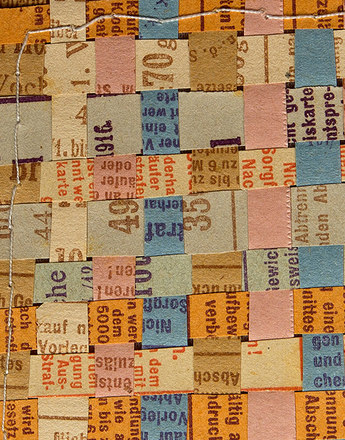Rubber goods were widely used in the home and for technical and scientific purposes. When supplies of rubber from the colonies of other powers were no longer available, no suitable substitute was found during the First World War. The processing and recycling of old rubber was the only possibility.
Rubber, the milky sap from various trees, was known to the Mayas and Aztecs in Central America. In 1736 the French explorer Charles Marie de la Condaminedie sent the first samples of this material from Ecuador to Europe. Inventors attempted to find applications for the material, but its properties made it difficult to use without prior processing. Goods made of pure rubber came apart when warm and crumbled when cold. Among the pioneers of the rubber industry in Austria was Johann Nepomuk Reithoffer from Moravia. Following years of experimentation a breakthrough in technical applications was achieved around 1840 by the American Charles Goodyear. He mixed untreated rubber with sulphur. The product of this vulcanisation, as it was called, was one of the first synthetic materials and provided the basis for making durable consumer goods.
Articles made with this new “rubber” and of hard rubber (ebonite with higher sulphur content) gradually found their way into all consumer sectors – clothing, shoes, boots, gloves and bathing hats, balls and sporting equipment, household goods and travel articles, as well as many chemical, medical and pharmaceutical items. Rubber consumption went to a new level with the invention of the bicycle and automobile and the demand for tyres. Rubber plantations also developed as a result. In 1876 seeds from the rubber tree Hevea brasiliensis from Brazil were sent to London and then to Ceylon (Sri Lanka). From there other plants were shipped to Singapore. From around 1910 rubber was systematically cultivated in rubber plantations on the Malaysian peninsula. Locals were forced sometimes under brutal conditions to work on the rubber plantations. In the Congo, for example, the Belgian king Leopold II greedily enriched himself at the expense of thousands of natives.
Large amounts of natural rubber thus came from the colonies of the European powers Great Britain, Belgium, France and the Netherlands. To reduce this dependence, the chemist Fritz Hofmann from Leverkusen started in 1910 to make small amounts of synthetic rubber. After war broke out and the sources of rubber dried up, the army needed large amounts of rubber for automobile tyres, balloons, hospital requisites and surgical instruments. There was no substitute material available except for regenerated old rubber. As a result many civilian trucks had to be driven without rubber tyres. This damaged roads and buildings. A speed limit was therefore introduced in 1917 of 9 km/h on paved roads and 12 km/h on unpaved ones.
Translation: Nick Somers
Giersch, Ulrich/Kubisch, Ulrich (Hrsg.): Gummi. Die elastische Faszination, Berlin 1995
Weitensfelder, Hubert: Die großen Erfinder, Wiesbaden 2009
-
Chapters
- Chicory, peat & Textilit: surrogates before the war
- The age of iron
- Bells for bullets: metal collection
- Fragile clothing: textiles and paper fabrics
- Well shod? Tanning agents and leather
- Rubber goods: elastic and essential
- From far and near: resins and resin products
- The 1918 surrogate exhibition in the Prater






